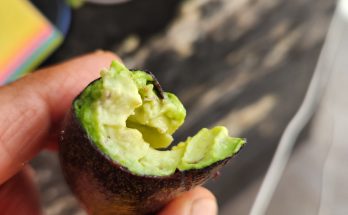By Mike Stoltz
If you’re an ex-pat in San Miguel de Allende, you are likely akin to an adventurous character, so these two activities could arouse both your mind and body simultaneously. The first is almost two centuries old, originated in England, and is the only one of its kind in the country. The second is as new as a poppy sprout in spring and spreading just as fast. But unlike most physical activities, these two are quite social and can lead to friendships, marriage, or even a roll in the hay—the latter was not volunteered by any member. I added it unilaterally because I want you to keep reading and use your imagination.
One of my readers, Norm Lussier, suggested I come out and visit the Hope Harmon Croquet Club in the Atascadero colonia. I like my columns to be interesting, edgy, or satirical, so I kind of sighed until Norm mentioned it was the only croquet club in the country. Moreover, the irony of a local pasatiempo, largely engaged in by Anglos, was founded in 1964 by Dr. Hope Harmon, a microbiologist and Mexican national. That narrative piqued my interest, so I thought I’d check it out.
The following Saturday afternoon I drove up to a long, walled compound of sorts that could be mistaken for a commercial enterprise with, of course, the characteristic modest, solid entry gate. The big “wow” of what most of us experience here behind those solid doors did not disappoint. Rather than a palatial villa, there was a lawn the size of an Olympic pool, cut to the likes of a well-groomed putting green. The turf was decked out with wickets (I knew them as hoops when I played in our backyard as a kid), one post in the center and some really cool mallets that looked like Geppetto could have carved them.
Ron, Bob, Mary, and Norm, who I broke pizza crust with, were all decked out in white outfits that screamed, “bring me a mint julep!” They told me that there were two versions of the game, the first being “U.S. rules,” which sounded pretty convoluted, with 50 rules and maybe another 100 subset of rules which didn’t inspire my movement toward a mallet. The second they described as “golf croquet” and was predominant there among many expats. They said it was much easier and user-friendly.
So, my turn came to grab a mallet. Because I’m a golfer, I positioned myself to the side. They all chimed in with collective frowns of disapproval and encouraged me to take the preferred stance with the mallet between the legs. But I always thought that was goofy, and I care more about style than substance (I’m from Los Angeles). Like Frank before me, I did it “my way,” and to the astonishment and awe of my hosts, I maneuvered that baby dead center from a good 10 meters! What they didn’t know (until now, of course) is that I was aiming for the hoop that was a meter away from the one I sunk.
One might associate croquet with a stuffy group of folks, but they were super nice, friendly, and welcoming. There is a Friday night social event aptly called “wine and wickets.” There is a modest annual membership fee, and they are nice enough to even welcome you for a trial game, so take a look at the Hope Harmon Croquet Club. You can google croquetSanMiguel.Wordpress.com. for more details.
The second activity has kind of a goofy name, but it is all the rage in the U.S., and San Miguel de Allende is no exception. You can find four relatively new pickleball courts at the La Unidad Deportiva off of Hwy 51, direction Celaya. Locals play year round, and the membership explodes as snowbirds from the U.S. and Canada flee here for the winter months. It’s a terrific sport for several reasons. It is easy to learn—there is a free clinic every Saturday morning, and you can be up and running in a game within 30 minutes. It’s less injurious than higher-impact sports like tennis and squash because of the size of the court, the rules, and lightweight equipment—a whiffle ball is used. It’s incredibly social because there are typically four players with two doubles to a court and with a double waiting to play the winners.
Victor, a regular member told me, “Unlike many sports, including golf, you are not stuck with the same four people as pairs are rotated in and out.” He continued, “And unlike tennis where it can take time and practice and a compatible level of skill to rally, in pickleball, you can rally after a 30-minute lesson.” In San Miguel, the players are largely Anglo, but in Lake Chapala and Zacateros, where annual tournaments are held, you can find a minimum of 50% Mexican nationals participating. It’s more of a pizza and beer than mint julep kind of game, but as you can see, San Miguel offers opportunities for movement and team play for little cost or even coordination for that matter. For more insights on the organization go to smapickleball.com.
For any column ideas or constructive insight email Mike at vmstoltz@gmail.com.




